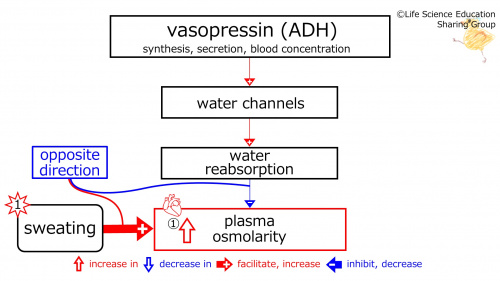| With sweating, the (blue→red) negative feedback increases (the synthesis, secretion, and blood concentration of) vasopressin (anti-diuretic hormone, ADH). |
① Sweating increases plasma osmolarity (concentrated, hypertonic), and water reabsorption (through the water channels, which are increased by vasopressin, ADH) decreases plasma osmolarity. These effects are in the opposite direction (blue).
② Since these effects are in the opposite direction (blue), negative feedback increases (red) (the synthesis, secretion, and blood concentration of) vasopressin (anti-diuretic hormone, ADH). This increases the number of water channels and the water reabsorption. The plasma osmolarity-decreasing effect of the water reabsorption becomes stronger. This will lead to a reverse in the increased plasma osmolarity (concentrated, hypertonic) produced by sweating, decreasing it towards normal (baseline, isotonic) osmolarity.
Challenge Quiz


